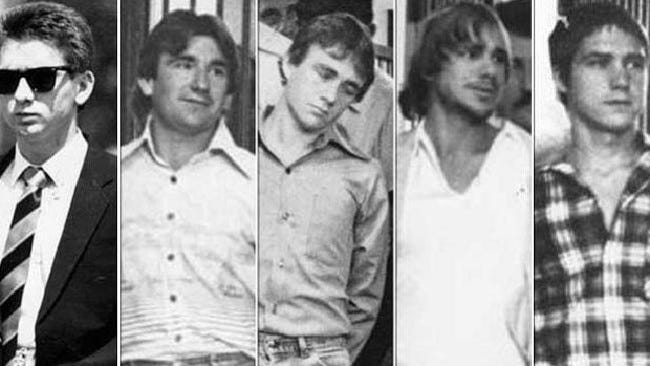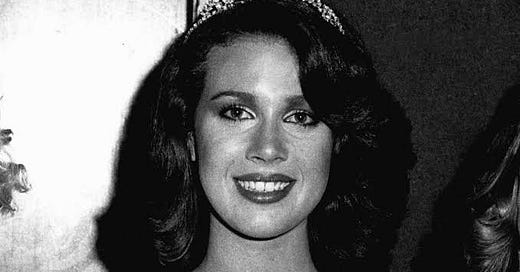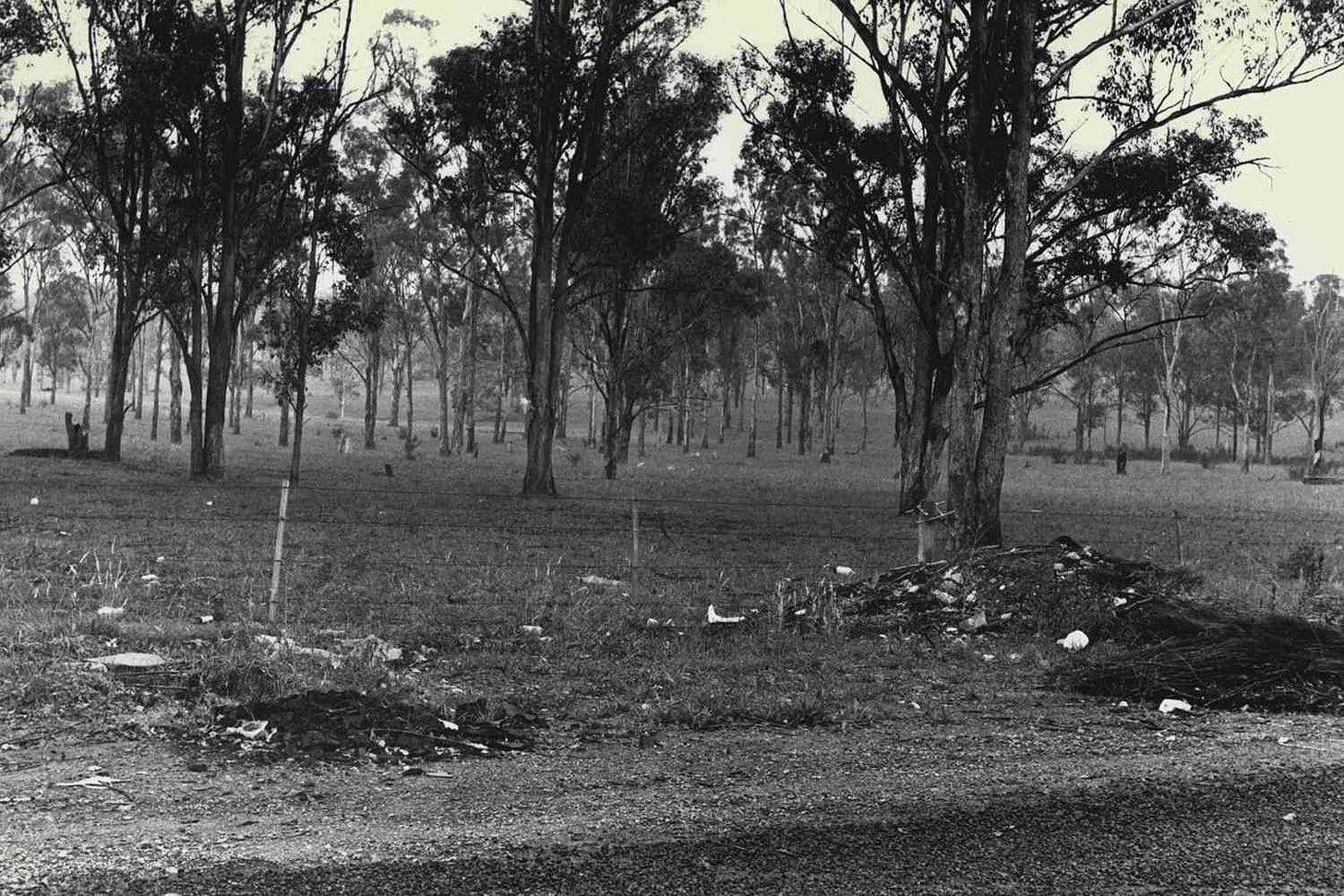Anita Cobby: The Murder That Shocked Australia
TW - crime and violence against women, graphic information, rape and sexual assault, sexual violence
On a February evening in 1986, a 26 year old nurse, Anita Cobby, boarded a train home from work, unaware it would be her last journey. She was described as intelligent, compassionate and deeply loved by many who knew her. What followed would be a crime so brutal and senseless it stunned a nation into silence and shared mourning.
Australia would become more stunned when they learned the graphic details of her crime and the five men with long criminal histories who committed the unimaginable act of violence, shattering Australia’s sense of safety, leaving a bruise on Australia’s psyche.
Four decades on, the murder of Anita Cobby remains etched into Australia’s collective memory - not just as a horrifying crime, but the danger women face and the cracks of institutional accountability when it comes to gendered violence.
Before Anita became known for her death, Anita Cobby was a young woman with dreams, compassion and a life full of promise. Her beauty may have garnered public attention, but it was her compassion and intelligence that defined her.
Born Anita Lynch November 1959, she grew up in the Western Sydney suburb of Blacktown and was the eldest of three in a close-knit, working-class family to Grace and Garry Lynch.
Anita attended Blacktown Girls High School. Anita was a high achiever who excelled. She was known for her work ethic and sense of discipline.
As a teenager, she would compete in pageants, and she won the Miss Western Suburbs Pageant in November 1979, holding a promising future as a model as the title brought her public recognition. Instead, Anita decided to follow in her mother's footsteps, putting her energy and intellect into nursing.
Anita studied and trained at Sydney Hospital, later becoming a qualified nurse. She thrived working as a nurse as she had a natural ability to care for others with empathy and grace. Anita had been drawn to psychiatric nursing, which required an immense emotional patience and understanding. Co-workers described that she was often going above and beyond to make her patients feel safe and heard.
It was there that Anita met her husband, John Cobby, a fellow nurse. They would marry in March 1982.
Unfortunately the same year of her death, their marriage had strained and had been living apart. Anita staying with her parents in Blacktown. According to John, he and Anita were on good terms and, when she was murdered, had been planning to reconcile their marriage. Despite this, Anita’s life was steady as she was surrounded by loved ones and had her career.
What makes her story so profoundly tragic is how ordinary, relatable, and full of promise her life was. Anita represented so many young women—professional, caring, quietly ambitious, and striving for happiness and independence. That her life was so violently taken, in the midst of everyday routines, resonated deeply with the public and remains a stark reminder of how random and senseless violence can shatter everything in an instant.
John Cobby has spoken publicly on Anita’s death, expressing profound grief and the enduring turmoil.
In interviews marking significant anniversaries of the crime, he has shared his ongoing struggle with guilt and loss. He has stated that he still blames himself for her death, despite having no involvement in the crime. He mentioned that he cannot bring himself to learn the names of her killers, as doing so would make the pain more real.
John was actively searching for Anita when he heard a news report about a woman's body being found, which turned out to be hers.
The Perpetrators
Five men were charged with the murder and rape of Anita Cobby. They had over fifty prior convictions for offences included armed robbery, assault, theft, drug use and rape amongst many others.
John Travers, who was 18 at the time, was considered the ‘ringleader’. He had a troubled childhood and had been in a juvenile detention facility. When his mother got sick, he and his siblings were sent to live with foster families while she was in hospice. During this time, he had developed violent sexual behaviour towards men, women and animals. He was known to be violent towards birds, lambs and sheep.
Michael Murdoch, aged 18 at the time, was a childhood friend and criminal associate of Travers. According to some reports, he had experienced sexual assault throughout childhood, including writing to politicians, while he was in juvenile prison, about the assaults and how he wanted protection.
There were three brothers, known as the Murphy Brothers. Michael Murphy was aged 33, Gary was aged 28 and Les was 22 at the time of the murder. The brothers had a shared history of crime relating to car theft, anger issues/violence.
These men were collectively hated by the community long before Anita’s murder. They were of below average intelligence as well.

What Happened and the Investigation
On the 2nd of February, 1986, the night of her murder, Anita had been having dinner with friends after finishing her shift at Sydney Hospital located on Macquarie Street. She caught the 9.12pm train to Blacktown in outer-western Sydney to her parents’ home, where she was living after recently separating from her husband, John.
When she go to the station, she realised that the public phone had been vandalised, therefore she couldn’t call her father, Gary to come collect her by car.
At 9:45 pm, Anita began the short walk to her parents’ home. But she would never make it back.
As Anita was walking alone along Newtown Road, a Holden Kingswood slowed behind her and stopped, the car containing five men. Two of the men leapt from the car and dragged her into the vehicle as she kicked and screamed.
A boy had heard the commotion from his house and had gone outside to see what was happening. There, he had just seen Anita being forced into the car, and he tried to run across the road to help, but the car drove off before he could reach it. After he returned home, he telephoned the police to report what had happened. His neighbour and girlfriend, who were told about what happened, had driven in search of the car. They eventually drove down Reen Road (now known as Peter Brock Drive), Prospect and stopped by the now-empty Holden, where the man used a spotlight to search the paddock. He reported seeing nothing in the paddock and believing the car he was looking for was a different model Holden, he returned home.
Travers, Murdoch and the three Murphy brothers had been driving aimlessly that evening, intoxicated on drugs and alcohol and had been looking for someone to rob.
The five men had ordered Anita to strip off her clothes despite her begging them to let her go. She even mentioned that she was married and also menstruating, she pleaded with them and had offered to give them money if they would let her go. Instead, these disgusting men had punched her repeatedly, breaking her nose and cheekbones.
They then drove to a petrol station using the money they stole from her purse.
They then drove down Reed Road to a secluded paddock.
They had then dragged her body into the paddock, where they continued to abuse her for some time. Travers had confessed that during the attack, he was worried that she would identify them after hearing their names and knowing their faces.
This would lead to him convincing the rest of the monsters to kill her.
Anita was then bashed, raped and tortured before having her throat cut, the cut so severe; according to reports it had left her almost decapitated. Travers was the one to commit the murder.
Anita’s body was left in the field, and the five murderers returned to their lives as if nothing had happened.
After leaving her in a field, they burned her clothes in one of their back yards to hide evidence, police said, according to the Sydney Morning Herald.
When Anita didn't return home that night, her family thought Anita had decided to spend the night with a friend. But when they realised she had failed to appear at work the next day on the 3rd February, they reported her missing. It had taken two days before Anita’s body was discovered.
On the morning of 4 February, her naked body was found in the paddock by a farmer investigating what his cows were surrounding. The scene was violent, and it had even left seasoned detectives mentally disturbed. The brutality of the crime sent shockwaves across the country. Media reports struggled to describe the horror without censorship. The Australian public was outraged.
The calculated cruelty of the crime — the fact that Anita had done nothing more than walk home from work really struck a deep chord with Australians. Women across the country feared for their safety. Men felt disgusted and helpless. For many, it was the first time they truly recognised the horror of gendered violence in their own communities.
But this was just the beginning. The investigation would reveal that all five men were known to police, had extensive criminal histories, and should never have been free to roam the streets. The crime wasn’t just a tragedy — it was a failure of the system.
The police launched a massive investigation. They knew early on that the attack was premeditated and committed by multiple offenders.
The NSW Police Force immediately established Strike Force Air to lead the case, with veteran dectives and forensic specialists working around the clock. They canvassed Blacktown and went through every piece of evidence.
On 9 February, police re-enacted Cobby's movements on the night of her disappearance in the hope of jogging the memories of travellers or others who might have seen her. Constable Debbie Wallace wore similar clothing to Cobby and travelled the 9:12 p.m. train to Blacktown. Detectives interviewed the passengers and showed them photos of Cobby while Wallace walked the length of the train during the journey.
This was also one of the biggest things about the investigation that really (in a way) disturbed the public and also drew attention to the case.
The only early breakthrough came from witnesses who recalled hearing a woman screaming in the street and seeing a suspicious car—a stolen Holden Commodore—circling the area.

Then, a crucial development came from within. A 16-year-old girl (dubbed Miss X), who knew and had dated Travers, one of the eventual killers, came forward. Travers had allegedly boasted about the murder, describing it in chilling detail. Disturbed by what she had heard, she tipped off the police. Investigators quickly placed Travers under surveillance, monitoring his movements and phone calls. It was a turning point.
To gain a confession, police used an undercover operation with Miss X to get a confession from Travers while she visited him in his cell.
Miss X later went to Murdoch's home while wearing the concealed recording device to capture his statements on tape as well. Eventually, five men were arrested and charged with the murder.
The Trial and Media Reaction
By the time Travers, Murdoch and the Murphy brothers were brought to trial in 1987, Anita’s story became one of the most widely reported and emotionally charged criminal cases in Australian history due to the media coverage on the crime, investigation and trial.
The case dominated headlines for months, with front pages printed with Anita’s face alongside graphic descriptions of her final hours. Tabloid media would publish sensationalised and quite often fictionalised accounts of the crime with lurid detail.
The public’s appetite for justice was overwhelming. Talkback radio was flooded with calls for the reinstatement of the death penalty, which had been abolished in NSW in 1985, just one year prior. Protesters gathered outside the court, shouting at the accused, holding placards that read “Bring Back the Rope” and “Justice for Anita.”

Petitions with tens of thousands of signatures were submitted to the New South Wales government, and a Sydney TV station conducted a phone-in poll where nearly 95% of the 16,000 callers supported capital punishment's return.
The trial of the five men accused of Anita's abduction, rape and murder commenced 16 March 1987 at the Darlinghurst Central Criminal Court.
On the first day of trial, Travers changed his plea to guilty, admitting his role. Media outlets went crazy, by using headlines with ANITA MURDER MAN GUILTY.
The Sun had also done a detailed article on Michael Murphy’s recent escape from Silverwater Correctional Centre and his criminal history - raising concern for potential prejudice. This resulted on the empanelling of a new jury.
The trial would go on for 54 days, with overwhelming evidence including forensic findings, witness testimonies and confessions from the men.
The defence attempted to minimise their clients' involvement, but the gravity of the crime and the weight of the evidence led to all five men being found guilty of murder on 10 June 1987.
During the trial, the presiding judge, Justice Alan Maxwell, was visibly shaken by the evidence and described the crime as one of the worst examples of human depravity he had ever encountered. During sentencing, he said:
“This was a calculated, savage, and totally inhumane attack... The infliction of pain and degradation appeared to be a prime motive.”
He further recommended that the files of each prisoner be clearly marked "never to be released," reflecting the severity of the crime and the necessity for life imprisonment without the possibility of parole.
The five monsters received life sentences without the possibility of parole - an extremely rare punishment in Australia at the time. This sentence reflected the exceptional brutality of the crime and the community’s demand for harsh justice.
The Aftermath
As of 2025, Travers is at Wellington Correctional Centre’s maximum security unit. He has previously tried to escape from other prisons. He has been in Long Bay, Parklea, Maitland, Goulburn, Grafton, Lithgow and Wellington Correctional Centres.
Murdoch was housed at Goulburn Correctional in maximum security. He has also spent time in Long Bay, Parklea, Windsor, Maitland, Bathurst, Lithgow, Junee and Goulburn Correctional Centres.
Gary Murphy was housed in Goulburn Correctional Centre. In June 2019 he was severely beaten by other prisoners, in August 2020 it was revealed he had been moved back to Long Bay after spending some time in hospital.
Les Murphy was housed in Goulburn Correctional Centre in maximum security. Since being sentenced Murphy has spent time in Long Bay, Parklea, Lithgow, Grafton, Maitland and Goulburn Correctional Centres.
Gary Murphy had passed away February 2019 from liver cancer whilst at the Long Bay Hospital and the Long Bay Correctional.
NSW Corrective Services confirmed the four other offenders were still alive and were still serving their life sentences in various maximum-security correctional centres across New South Wales.
The Lasting Impact
The Anita Cobby case tells us a lot about a great deal of violence, justice and media and society, particularly with an enduring crisis of violence against women.
At its core, the case is a harrowing example of gender-based violence. Anita Cobby was abducted while walking home — a routine act that many women do every day. Her rape and murder were not random or accidental; they were acts of domination and cruelty, inflicted by men who felt entitled to degrade and destroy a woman for their own pleasure.
It highlighted how women’s safety in public spaces was not guaranteed, and how violence against women is often not about lust, but about power and control. The public outcry following the case helped push this issue to the forefront of national debate.
The men who killed Anita were repeat offenders, most of them with long histories of crime, neglect, and institutionalisation. Some had escaped custody or were out on bail. As The Guardian’s retrospective piece put it, “everyone in the car that dreadful night had a passport to doom” — pointing to lives shaped by poverty, abuse, and state neglect. This doesn’t excuse their actions, but it shows how structural failures can lead to tragic consequences if left unaddressed.
Anita’s murder united Australians in grief and rage. People saw in her their daughters, sisters, partners, and friends. The case reignited calls to reinstate the death penalty, despite its recent abolition, and became a rallying point for tougher sentencing.
The aftermath of the murder and trial for Anita Cobby profoundly affected those closest to her.
Both Garry and Grace Lynch transformed their grief into a mission to support other victims and their families of violent crimes. They both founded the Homicide Victims’ Support Group, providing assistance and advocacy for those affected by homidie.
Her father emerged as a symbol of dignified advocacy, pushing for better protections for victims and law reforms. His pain resonated deeply, and his campaigning gave the public a voice — one demanding not just punishment, but prevention and accountability.
Both Garry and Grace have contributed to many campaigns regarding tougher sentencing laws for violent crimes and greater transparency in the criminal justice system. Both of them passed away, Grace in 2013 and Garry in 2008. Both were remembered for their unwavering dedication to justice and their compassionate support for others enduring similar tragedies.
John Cobby, Anita's husband, was initially a suspect in the investigation but was quickly cleared. The trauma of losing Anita, coupled with public scrutiny, led him to withdraw from the public eye. He changed his surname to distance himself from the case and grappled with profound guilt, expressing in interviews that he still blames himself for her death.
Years later, following the deaths of Garry and Grace Lynch, John reverted to his original surname and began speaking publicly about Anita's murder. He has since worked as a psychiatric nurse in Sydney and is a father of two. Despite the passage of time, he continues to advocate for justice, expressing a desire to ensure that Anita's killers remain incarcerated for life.
The enduring impact of Anita Cobby's murder on her family underscores the profound and lasting effects of violent crime. Their responses—ranging from advocacy and public engagement to personal resilience—highlight the varied ways individuals cope with unimaginable loss.








